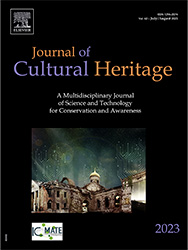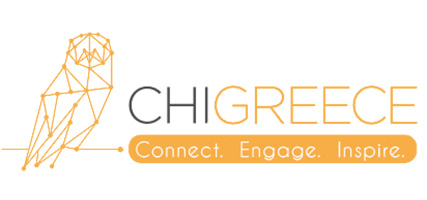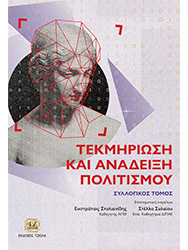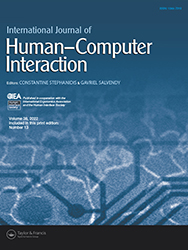


Sylaiou S., Dafiotis P., Fidas C., Vlachou E., Nomikou V. (2024). Evaluating the impact of XR on user experience in the Tomato Industrial Museum "D. Nomikos", Heritage. Special issue: Museums for Heritage Preservation and Communication—2nd Edition (accepted with revisions)
Abstract: This study presents the background and the evaluation of integrating eXtended Reality (XR) in the permanent exhibition at the Tomato Industrial Museum "D. Nomikos". This paper firstly provides the context of this study by outlining the methodological, technological, and museological approaches undertaken to integrate XR in a quest to enhance visitors’ meaningful engagement with the industrial heritage-related exhibition. Storytelling and narration are key elements of the museums’ museological design through audio tours and interactive AR-based visualization of the machinery’s role and function. This paper presents and discusses the design of the evaluation methodology employed in the context of pertinent methods and approaches used in related research. This study investigates the effectiveness of XR for audience engage-ment, the added value that such technologies offer to the user experience as well as possible im-provements. The main method adopted for gathering quantitative data is the User Experience Questionnaire (UEQ) and qualitative, through semi-structured interviews. Moreover, the find-ings are analyzed, interpreted and discussed. Based on a case study, this paper offers a broader discussion of the challenges and prospects connected to the quest of employing emerging tech-nologies and assessing their impact on visitors’ museum experience, reaching conclusions for fu-ture directions in the field.

Fidas C., Sylaiou S., Kuflik T., Liarokapis F., Koutsabasis P., Wallace M., Koukopoulos D., Antoniou A., Mania K., Lykourentzou I. (Eds.) (2023). Proceedings of the First International Workshop on Accessibility and Multimodal Interaction Design Approaches in Museums for People with Impairments co-located with MobileHCI 2023 Conference Athens, Greece, September 26, 2023 - https://ceur-ws.org/Vol-3622
Abstract:
This volume contains the papers presented in the context of the AMID 2023 - International Workshop on Mobile and Multimodal HCI Design Approaches in Museums for People with Impairments (http://amidworkshop.ece.upatras.gr), held within the 25th International ACM Conference on Mobile Human-Computer Interaction (MobileHCI), Athens, Greece, on September 26–29, 2023. The aim of the First International Workshop on Mobile and Multimodal HCI Design Approaches in Museums for People with Impairments is to bring together researchers as well as practitioners who are active in doing research on or employ tools and methods related to mobile HCI in museums that foster the experience of visitors/users with impairments. The workshop comprises contributions that cover a wide range of interrelated fields, topics, and contexts and include Adaptation and Personalization, User Modeling, Human-centered Computing, and User Experience. It addresses academics, scientists, students, ICT professionals, service providers and developers, designers, and end-users with the view to exchanging and sharing best practices, innovative methodologies, experiences, and ideas as well as presenting research findings and insights gained that pertain to theoretical, technological, or methodological facets of the various HCI Design Approaches for People with Impairments in Museums. The workshop presents and discusses methods, tools, and techniques to design and develop mobile museum applications for people with impairments. More specifically, the research presented mainly relates to technological solutions that support museum visitors with visual, motor, and hearing impairments. The workshop foregrounds the importance (as well as the related challenges) of providing meaningful and engaging experiences to museum visitors with customized interfaces adapted to the characteristics of various groups of people with special needs. Moreover, the workshop addresses the employment of Mixed Reality (i.e., the combination of real and virtual worlds), as this technology heralds new possibilities in enhancing access and inclusion with regard to museum visitors with impairments. The workshop attracted experts who outlined and discussed the challenges and opportunities that arise in the field and presented solutions concerning methods, tools, and techniques in HCI. Research presented included user requirements and system design, adaptation, and optimization, as well as uses of emerging technologies to enhance inclusion and meaningful engagement. The areas covered in the workshop include (but are not limited to) accessibility for users with motor impairment, inclusion of sign language, introduction of soundscapes for the visually impaired (through the presentation of a case study), methodologies for a wide range of visual impairments, pertinent surveys of existing research and suggestions for future practices in the field. Furthermore, the workshop also addressed issues of inclusion in relation to openness with regard to content creation, the principles that should guide adaptation of exhibition design as well as interactive exhibits, resources or prompts showcasing specific research projects. Examples of applications for hand-held devices for people with certain types of impairment were presented by authors who designed, employed, and evaluated them, while in some cases thorough as well as targeted surveys of existing practices were involved in the context of presenting or foregrounding a certain methodological approach.
The workshop has put emphasis on the following:
There was one invited paper by Prof. Alan Six (Director of the Computational Foundry, Swansea, Wales, UK). The workshop accepted after a peer-reviewed process seven papers that have focused on a variety of topics, with the aim to foster cross-fertilization of approaches emanating from diverse disciplines related to differing users with the goal of synthesizing methods, enriching and where applicable, synthesizing or adapting methods and gaining insights as well as inspiration for future research. The workshop also aspires to facilitate the creation of a knowledge hub in the form of a research community that will remain in contact and collaborate after its conclusion. As a final remark, the Programme Committee would like to warmly thank the keynote speaker, Prof. Alan Dix, for his inspiring talk and insightful paper, and all the contributing authors, as well as the organizers of the 25th International ACM Conference on Mobile Human-Computer Interaction (MobileHCI), who helped us to run the event.

Gkagka E., Sylaiou S., Koukopoulos D., Fidas C. (2023). Designing accessible cultural heritage experiences for individuals with hearing impairments. Proceedings of the First International Workshop on Accessibility and Multimodal Interaction Design Approaches in Museums for People with Impairments co-located with MobileHCI 2023 Conference Athens, Greece, September 26, 2023, Vol-3622 - https://ceur-ws.org/Vol-3622/paper8.pdf
Abstract: This paper examines the design considerations and challenges in creating accessible cultural heritage experiences specifically tailored for individuals with hearing impairments. Cultural heritage sites hold immense value in terms of historical significance, art, and cultural identity, and ensuring inclusivity for all visitors, including those with hearing impairments, is crucial. Drawing upon user-centered design principles, this study explores various aspects that must be addressed to provide meaningful and inclusive experiences. Key considerations encompass the provision of Mixed-Reality (MR) solutions that deploy real-time speech-to-text translation combined with mobile applications that provide visual cues to the communicating peers. Challenges such as communication barriers, technological limitations, and the need for effective collaboration between cultural heritage institutions, designers, and the hearingimpaired community are discussed. By addressing these considerations and challenges, this paper aims to foster awareness and provide insights into developing inclusive cultural heritage experiences that cater to the needs of individuals with hearing impairments, facilitating their engagement and appreciation of our shared cultural heritage.

Koukopoulos D., Koukoulis K., Sylaiou S., Fidas C. (2023). XR technologies fostering museum visits for people with impairments. Proceedings of the First International Workshop on Accessibility and Multimodal Interaction Design Approaches in Museums for People with Impairments co-located with MobileHCI 2023 Conference Athens, Greece, September 26, 2023, Vol-3622 - https://ceur-ws.org/Vol-3622/paper3.pdf
Abstract: XR technologies are a trend nowadays for enhancing museum visits. Although museum visits are a way to enhance well-being in modern cities, there is a question concerning how inclusive they can be, especially for people with impairments. In this work, we are interested in people with impairments like low vision or hearing problems. In such a context, we investigate the issue of how XR technologies can benefit museum visits for impaired people. Based on the literature, we make an attempt to specify user needs and associate them with XR technology functionalities taking into account how those functionalities have been implemented in current systems for museum visits. To the best of our knowledge, there is no system for museum visits that can personalize its features to the special needs of impaired persons independently of the type of impairment they are facing. Another challenge is the engagement of impaired persons in the design and development of such systems. Our results suggest that this scientific domain is in its infancy and a lot of work remains to be done, especially for the human-computer interaction community

Sylaiou, S., Dafiotis, P., Koukopoulos, D., Koukoulis, Chr., Vital, R., Antoniou, A., & Fidas, Chr. (2024). From physical to virtual art exhibitions and beyond: Survey and some issues for consideration for the metaverse. Journal of Cultural Heritage (Vol. 66, pp. 86–98). Elsevier BV. - https://doi.org/10.1016/j.culher.2023.11.002
Abstract: This manuscript addresses the increasing importance of Extended Reality (XR) in art exhibitions. It elaborates on the technologies employed, design issues, pertinent aims, and evaluation metrics. The main research questions concern the types of technologies currently used, the primary design considerations, and the ways user experience can be enhanced in accordance with the artists’ and curators' vision, aFs well as visitors' needs. Moreover, the paper also examines relevant evaluation criteria. The manuscript reviews the types of technologies used for virtual art exhibitions and examines their design characteristics and pertinent issues on interfaces, resources, and affordances. Furthermore, an analysis of the use of virtual humans as a model for increased engagement follows a discussion of a comparison between virtual versus physical exhibitions. Moreover, the parameters that affect user experience are discussed thoroughly, given their pivotal importance in such exhibitions. Finally, the paper concludes with a discussion of the above-mentioned aspects of XR exhibitions with an emphasis on optimizing design for art-related content and offering informed suggestions for future directions. The overall scope of this paper is to examine ways to exploit XR as a creative medium rather than merely replicate physical exhibitions. In this context, the papers’ discussion includes the Metaverse.

Fidas Chr., Sylaiou S., Kuflik T., Liarokapis F., Koutsabasis P., Wallace M. (2023). Mobile and Multimodal HCI Design Approaches in Museums for People with Impairments, MobileHCI ’23 Companion: Proceedings of the 25th International Conference on Mobile Human-Computer Interaction, September 2023, Article No.: 33, pp 1–4 - https://doi.org/10.1145/3565066.3609509
Abstract: The First International Workshop on Mobile and Multimodal HCI Design Approaches in Museums for People with Impairments aims to bring together researchers and practitioners working on diverse topics related to understanding the issues connected with mobile HCI in museums for people with impairments. The workshop includes interdisciplinary contributions on various related topics across a broad range of contexts, such as Adaptation and Personalization, User Modeling, Human-centered Computing, and User Experience. This workshop focuses both on academia and industry and aims to attract the attention of an interdisciplinary audience between researchers and professionals working in the field. It will bring together scientists, students, ICT professionals, service providers and developers, designers, and end-users to exchange and share their experiences, new ideas and research results about all aspects (theory, applications, and tools) of HCI Design Approaches for People with Impairments in Museums.

Sylaiou S., Gkagka E., Fidas Chr., Vlachou E., Lampropoulos G., Plytas A., Nomikou V. (2023). Use of XR technologies for fostering visitors’ experience and inclusion at industrial museums, CHIGREECE 2023: 2nd International Conference of the ACM Greek SIGCHI Chapter, DOI: 10.1145/3609987.3610008
Abstract: The study presents the research conducted and the solutions adopted to integrate Extended Reality applications in situ and online to enhance visitors' experience of the Tomato Industrial Museum "D. Nomikos" with emphasis on the needs of people with hearing impairments. This paper outlines the methodological, technological, and museological approaches undertaken to integrate XR in ways that will foster engagement with the narratives of people who worked at the premises and describe the production process. Storytelling and narration are key elements of the museums’ museological design (Sylaiou and Dafiotis, 2020) and, therefore, including visitors with hearing impairments through XR technologies that allow users to perceive audio tours and verbal accounts through real-time visualization of spoken language by an especially adapted speech to text functionality. Moreover, the paper explores the challenges faced throughout the effort to engage audiences and help them relate with the industrial heritage through exploring the exhibition by generating interest through multimodal resources accessible to all. To engage viewers, we developed interactive applications so that visitors will undertake to fulfill workers' tasks as in role-playing. The result of our approach is a balance between coming to close contact through digital narratives with the people of the time, ensuring inclusion of people with hearing impairments, while offering interactive visualizations of the exhibited machinery functions.

Dafiotis P., Stylianidιs E., Sylaiou S., Koukopoulos D., Fidas Chr. (2023). Evaluation issues in virtual exhibitions: applications in the fields of culture and art teaching, Documentation and Culture Promotion, 2023, 135–146. Tziolas Ed.
Abstract: This chapter presents the basic parameters that determine the quality of an extended reality experience in the fields of arts and culture. In particular, the factors of usability, users ' sense of presence in virtual environments, as well as learning opportunities in them are discussed. Reference is made to more specific criteria relating to cultural promotion applications with emphasis on virtual art exhibitions, as well as to the adaptation of the relevant evaluation methods in this field. The focus is on parameters that affect users' ability to engage with exhibits in extended reality environments and reflect on their experience. The issue of expressive possibilities of creating extended reality environments is addressed. Finally, there is an extensive discussion on the learning benefits of the process of creating virtual exhibitions with the research project Scaffolding Creativity of Arts Students: Framework, Toolchain, and Educational Material on how to Create their own Virtual Exhibitions (CREAMS). Based on the specificity that this presents as a learning medium for students of Fine Arts Schools, a critical approach to the ways of evaluating the Extended Reality Application Platform is developed.

Sylaiou S., Dafiotis P., Fidas Chr., Stylianidιs E. (2023). Virtual humans and their uses in art and culture promotion, Documentation and Culture Promotion, , 2023, 119-133. Tziolas Ed.
Abstract: The chapter builds on the results of recent systematic bibliographic as well as experimental research on the use of digital people in museums and places of cultural interest. The optimization of virtual people in the field of cultural heritage is an interdisciplinary effort, and this text examines the relevant research solutions that have been given and proposes future directions on the basis of applied practices, as well as developments in the field. Emphasis is placed on the technological characteristics of virtual people related to cultural heritage and the dominant trends in applied approaches concerning their use, role, and function. An important finding of the research is that there is an increasing trend of field-to-culture mixed reality applications. Furthermore, particular emphasis is placed on optimizing factors that make virtual people, e.g., guides, more effective as mediators of cultural content. Finally, behavioral realism, which occurs mainly in virtual reality applications, enhances user engagement to a significant extent, and we conclude that in the future, Mixed Reality applications will show an upward trend.

Sylaiou S., Fidas C. (2022). Virtual Humans in Museums and Cultural Heritage Sites. Applied Sciences 2022, 12(19), 9913.
Abstract: This article presents the results of a survey on the use of digital avatars and agents in museums and places of cultural interest. The optimization of virtual agents in the cultural heritage domain is an interdisciplinary undertaking and this paper investigates pertinent research and solutions and suggests ways forward. The research questions examined relate to (a) the technological characteristics of cultural heritage-related uses of users’ avatars and virtual agents, and patterns that emerge, and (b) suggestions for future research based on this article’s findings. We reviewed relevant publications and analysed the approaches presented to identify trends and issues that could lead to conclusions on the existing state of the field and, moreover, infer and suggest future directions. The main findings relate to a trend toward onsite, sophisticated installations or applications with increasing investment in mixed reality. Moreover, emphasis shifts toward optimising agents such as virtual guides or companions, mediators of cultural content and engaging facilitators. Behavioural Realism (BR), featured mostly in virtual reality installations, greatly fosters engagement according to the reviewed research, and we conclude that mixed reality onsite applications, which are gathering pace, should reach their degree of sophistication and combine the strengths of both MR and BR.

Sylaiou S., Fidas C. (2022). Supporting People with Visual Impairments in Cultural Heritage Realms: Survey and Future Research Directions. Special issue on Advanced Interaction in Cultural Heritage, International Journal of Human-Computer Interaction, 2022.
Abstract: This literature review surveys published research that aims to foster blind and visually impaired (VI) people’s engagement with cultural heritage. The reviewed papers cover a broad area of methodological approaches, outlining challenges and solutions for empowering VI people to enjoy cultural heritage sites and museums, mainly with the use of Information and Communication Technologies (ICT). Fifty (50) papers are included in this survey, published between 2008 and 2021. They mostly focus on multisensory, multimodal, and interdisciplinary, ICT-based assistive human- centered computing approaches. These methods often optimize the VI user experience through an effort to gain an in-depth understanding of this special group’s needs. Moreover, several publications include user evaluations and empirical studies. Findings suggest that approaches tend to become more complex, multimodal, and multidisciplinary as time progresses. This leads to a discussion and conclusions suggesting future research directions in this domain. The proposed way forward re lates to a synthesis of methodologies, scientific domains, and approaches into a more holistic, comprehensive, and synergetic model.

Sylaiou S., Fidas C. (2022). First Results of a Survey Concerning the Use of Digital Human Avatars in Museums and Cultural Heritage Sites. IMET 2022 (2nd International Conference on Interactive Media, Smart Systems and Emerging Technologies).
Abstract: The paper presents the first results of a survey on the use of digital human avatars in museums and places of cultural interest. The papers included in this survey have been published between 2003 and 2022. The research questions examined were related to (a) the technological characteristics of Cultural Heritage-related uses of digital human avatars and patterns that emerge, (b) what affects their potential for audience engagement and (c) what directions may be suggested for future research based on the findings of this review.